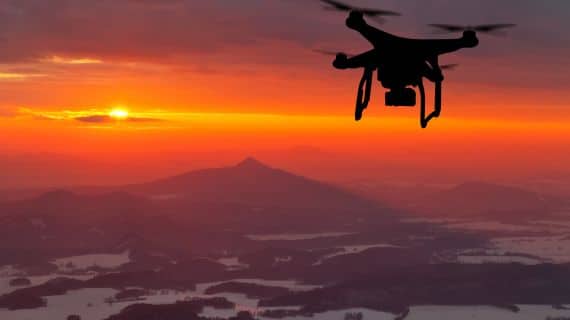As drones continue to grow in popularity for both recreational and professional applications, enthusiasts and potential buyers often wonder. “How high can a drone fly?” In recent years, drones have been used in filmmaking, Agricultureand infrastructure inspection. This article discusses the factors that affect a drone’s altitude capabilities, legal aspects of drone flight altitude, and drone performance at high altitudes. From understanding what drones can see at 400 feet up to discovering the highest flying drones on the market, we delve into the booming world of drones.
How high can a drone legally fly?
The maximum altitude a drone can legally fly is highly dependent on aviation regulations set by local governments. in the United States, Federal Aviation Administration Enforce a maximum altitude limit of 400 feet (122 meters) above ground clearance (AGL) for both recreational and commercial drone flights. This restriction is intended to prevent interference with manned aircraft and ensure the safety of all airspace users.
of Canada and the England, the maximum altitude limit is the same as in the United States. However, it is imperative to familiarize yourself with the local rules before operating your drone in a new region. In some cases, exceptions can be made through exemptions for certain use cases, such as professional aerial photography, infrastructure inspections, and emergency response.
Drone with highest altitude range
Most civilian and commercial drones are legally required to operate below 400 feet, but all models can reach impressive altitudes. Some of the highest flight rate commercial drones on the market include:
DJI M30 – The latest drone in the DJI Matrice series has a maximum altitude of 7000 meters. Drones have a wide range of commercial applications thanks to their multi-sensor payloads, flight times, and video transmission ranges.
Matrix 300: The ultimate drone in the DJI Matrice series, the Matrice 300 is an all-weather drone with a maximum altitude of 7000 meters. This versatile drone can be used for many industrial applications due to its long flight time and multiple payload capabilities.
Autel Evo Max 4T – One of the latest additions to the Evo series, the Max 4T drone boasts a wide range of features such as multi-sensor payload, 42 minutes flight time and 20km transmission distance. Its maximum flight altitude is 7000 meters.
Autel Evo 2 Pro V3 – The latest version of Autel Robotics’ popular Evo 2 Pro drone boasts some great features. The drone has a flight time of 42 minutes, a video transmission range of 15 km, and a maximum altitude of 7000 meters.
DJI Phantom 4 RTK: With a maximum altitude of 6,000 meters above sea level, this popular drone is popular for surveying and mapping applications. The drone also features omni-directional obstacle avoidance technology, a 30-minute flight time, and a 7 km video transmission range.
DJI Mavic 3: This versatile drone can reach a maximum altitude of 6000 meters above sea level, making it suitable for a variety of professional applications such as search and rescue missions and industrial inspections.
All these drones are developed for commercial applications. However, even consumer drones DJI mini drone It can reach altitudes of 5000 meters.
Please note that flying at such high altitudes requires special permits and adherence to specific safety guidelines.
What can a drone see from 400 feet up?
At an altitude of 400 feet AGL and equipped with a high-quality camera, the drone can capture stunningly detailed aerial photos and videos. From this height, the drone’s camera can provide a wide view of landscapes, cityscapes, and other large areas.For example, filmmakers It can create breathtaking aerial shots and allows agronomists to monitor crop health in vast fields.
While individual details such as a person’s face or license plate may not be distinguishable, drones can effectively capture the overall layout of real estate, infrastructure, and natural features.
final thoughts
In conclusion, how high a drone can fly depends on several factors, including drone specifications, legal regulations, and environmental conditions. As a drone operator, it is imperative to prioritize safety and adhere to local regulations when investigating advanced capabilities for drones. The potential for aerial photography, inspection, and other professional applications continues to grow as the range of drones with high-altitude capabilities on the market continues to expand. Always be aware of local regulations and always put safety first when operating a drone, regardless of altitude.
